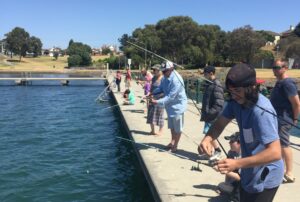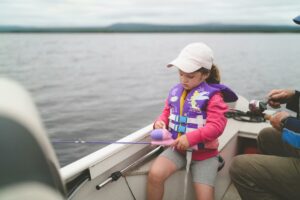June 24, 2017
By Dr. SIMON CONRON Leading Scientist, Fisheries Victoria
This article appeared in our Winter 2017 edition of the VRFish Fishing Lines Magazine
Melbourne’s population is growing fast. The number of new residents annually moving into the big smoke would fill the MCG, or alternately, Port Phillip Bay and the Western Port fringe of Melbourne combined, so it’s no great surprise that these two recreational fisheries are our largest in terms of participation and catches. Like the population of Melbourne, the number of anglers is also growing, which is the aim of the State Government’s Target One Million Plan – grow participation to one million anglers by 2020. So how will Fisheries Victoria monitor and maintain the health of fish stocks in the future to ensure recreational fishing remains sustainable and enjoyable?
New data sources
For more than 100 years, commercial fishing was undertaken in most Victorian bays and inlets. It provided catch statistics to track the sustainability of fish stocks. However, with the phasing-out of commercial netting in many Gippsland estuaries, Western Port and, most recently, Port Phillip Bay, fisheries managers could no longer rely on commercial catch information as an indicator of what was happening with stocks.

Catches by dedicated angler diarists also help inform fisheries managers about trends in the composition of fish stocks.
A new way of collecting information about stocks was needed. The answer was angler-based monitoring programs, which were developed in the late 1990s and have been running ever since. For the last 20 years, recreational fishery monitoring and assessment approaches using creel surveys have been undertaken for Victoria’s three largest recreational fisheries: Port Phillip Bay; Western Port and; the Gippsland Lakes. All boast populations of popular species such as, snapper, King George whiting, sand flathead and black bream.

The trend in King George whiting catch rates by anglers fishing in Western Port from 1998 to 2016.
The Creel Survey Program involves Fisheries staff counting and interviewing anglers at boat ramps and shoreline access points to record catch and effort (time spent fishing), social and opinion information. The outcome? A reliable set of information to monitor trends over time and help assess our key fisheries.
Measures include:
- Catch rate trends of key fish stocks over several years to indicate fish abundance and the sustainability of fishing;
- Fishing pressure and boat trailer counts;
- The level of angler satisfaction; and
- Effectiveness of bag and size limits based on catch and release rates and fish size data.
Smaller fisheries such as black bream, estuary perch, mulloway and dusky flathead in regional rivers and inlets are assessed using catch data provided by volunteer anglers participating in the Citizen Science Diary Program, along with local knowledge.
Western Port
Since netting Western Port was stopped in 2003, Fisheries Victoria has relied on the creel survey results to monitor the status of fish stocks. Information provided by more than 12,000 surveys, with anglers at Western Port boat ramps, show King George whiting stocks and the recreational fishery are in great shape. Catch rates are above the long-term average in nine of the last 13 years!
Top 6 species caught and kept by anglers in Western Port 2014-2017.
-
King George whiting 60%
-
Snapper 12%
-
Flathead 7%
-
Calamari 5%
-
Garfish 4%
-
Gummy shark 2%
When fishers were asked to rate their satisfaction level with fishing in Western Port, during last year, about 90 per cent said they were ‘very’ or ‘quite’ satisfied. These survey results show the fishery is ticking all the boxes for both anglers and Fisheries Victoria. A 90 per cent satisfaction rate and heathy fish stocks are great reasons for more Victorians to go fishing! Later this year, results from the Port Phillip Bay creel survey and the Gippsland Lakes will also be reported as part of this project, which has been funded by recreational fishing licence fees.








